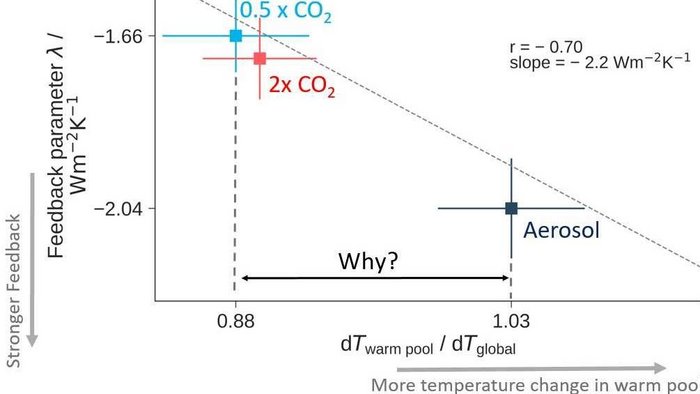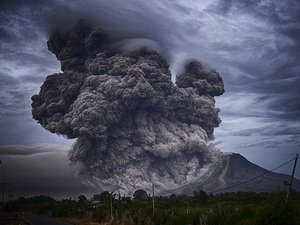Why stratospheric aerosol disproportionately cools the Indian and western Pacific Ocean
Large volcanic eruptions can inject aerosols into the stratosphere, that reflect sunlight, leading to a temporary cooling effect. This cooling is not uniform across the globe. Certain regions, particularly the tropical Indian and western Pacific Ocean, cool more strongly than the global average. The authors had previously demonstrated the critical role of temperatures in this so-called warm pool region in stabilising global mean temperatures in response to stratospheric aerosol forcing [previous news item]. Now they ask why the warm pool temperatures are so strongly affected by the aerosol forcing.
In the present publication, the research team points out two reasons for this. First, since large volcanic eruptions often originate in the tropics, the aerosols resulting from these eruptions is concentrated in the tropics, which is also where the sunlight is the strongest. This results in a stronger radiative perturbation and, consequently, a more pronounced cooling effect in the tropics, including the warm pool. However, this effect contributes only weakly to the pronounced warm pool cooling.
Second, the study explores the impact of changes in the stratospheric circulation, particularly the acceleration of the Brewer-Dobson circulation, on temperature patterns. This meridional overturning circulation, a slow-moving process driven by wave dissipation in the stratosphere, is affected by the presence of aerosols. Previous studies have shown that the aerosols locally heat the stratosphere, altering wave propagation and thus the driving force of the circulation, leading to an accelerated overturning. The present study confirms a new idea of the authors: the accelerated Brewer-Dobson circulation exports a substantial amount of energy from the tropics to the extratropics, thus contributing to the additional cooling of the tropical regions, in particular the warm pool.

The stratosphere is not usually considered to be a strong driver of tropospheric processes (with a few exceptions, such as sudden stratospheric warming, or the quasi-biennial oscillation). This is therefore a surprising result that highlights the importance of the stratospheric circulation for surface temperatures and the troposphere. Furthermore, the results emphasize the importance of an additional surface perspective for the climate response to forcing. Radiative perturbations due to climate forcing are typically assessed at the top of the atmosphere. However, such a metric ignores the importance of circulation adjustments that affect the surface temperatures.
Original publication
Günther, M., Schmidt, H., Timmreck, C., and Toohey, M.: Why does stratospheric aerosol forcing strongly cool the warm pool?, Atmos. Chem. Phys., 24, 7203–7225, https://doi.org/10.5194/acp-24-7203-2024, 2024
Contact
Moritz Günther
Max Planck Institute for Meteorology
moritz.guenther@mpimet.mpg.de
Dr. Hauke Schmidt
Max Planck Institute for Meteorology
hauke.schmidt@mpimet.mpg.de
Dr. Claudia Timmreck
Max Planck Institute for Meteorology
claudia.timmreck@mpimet.mpg.de

